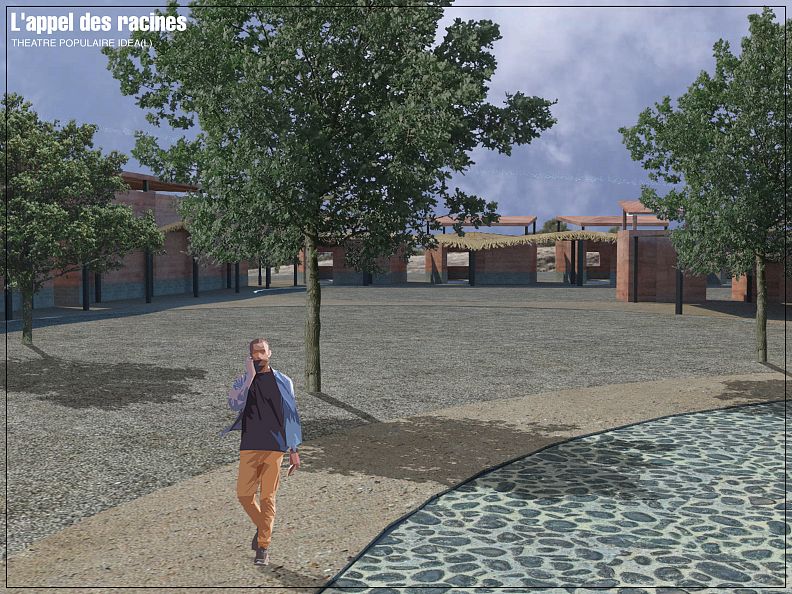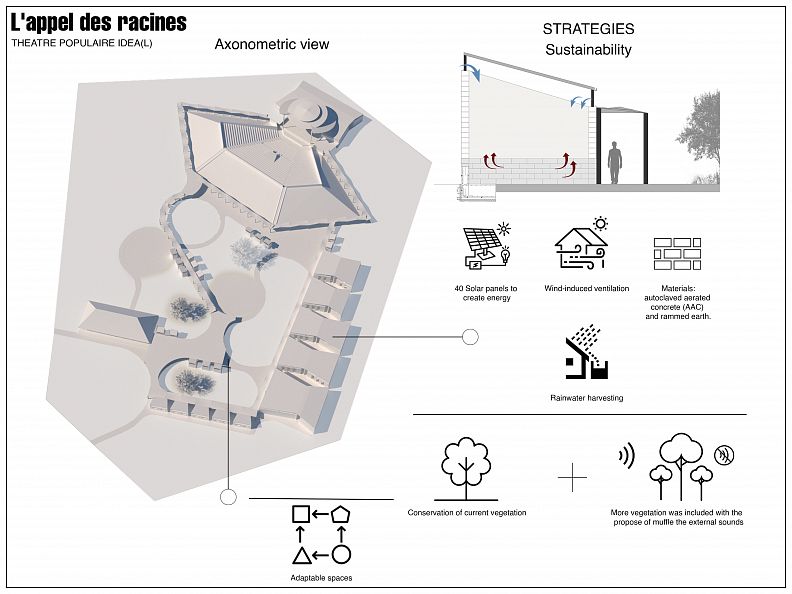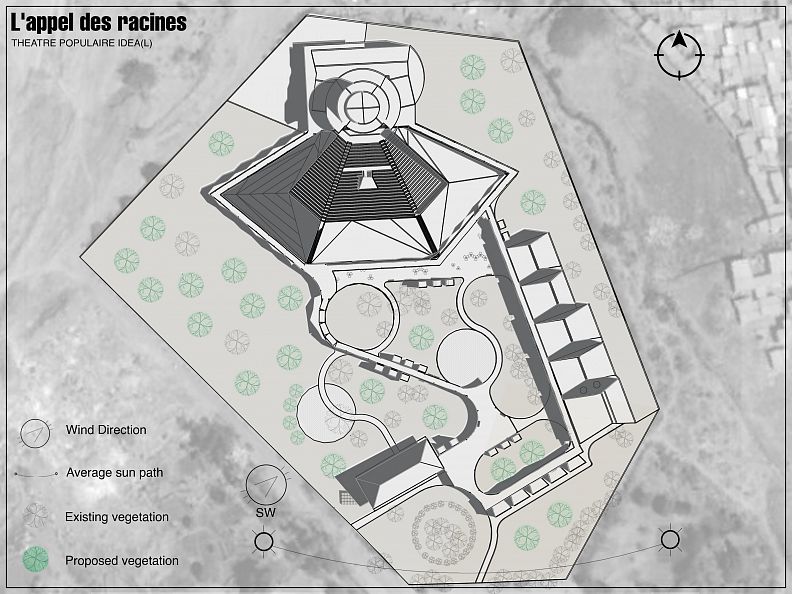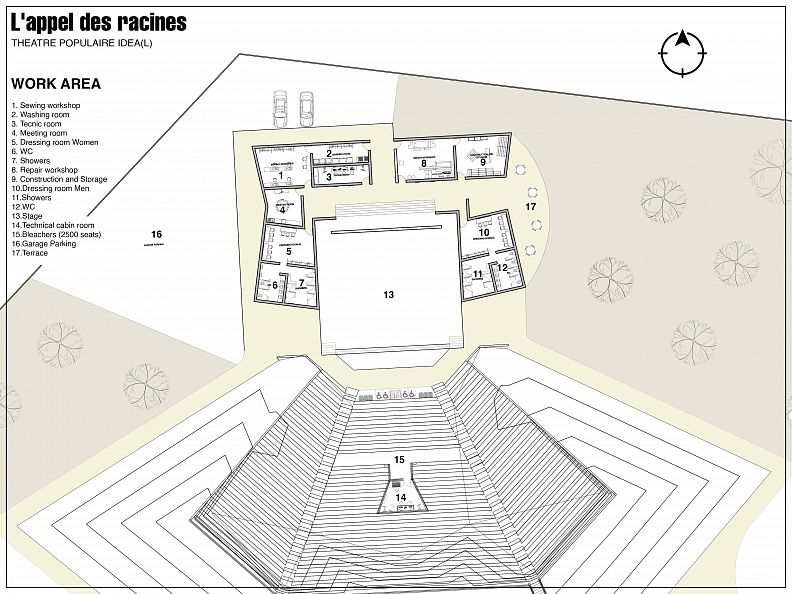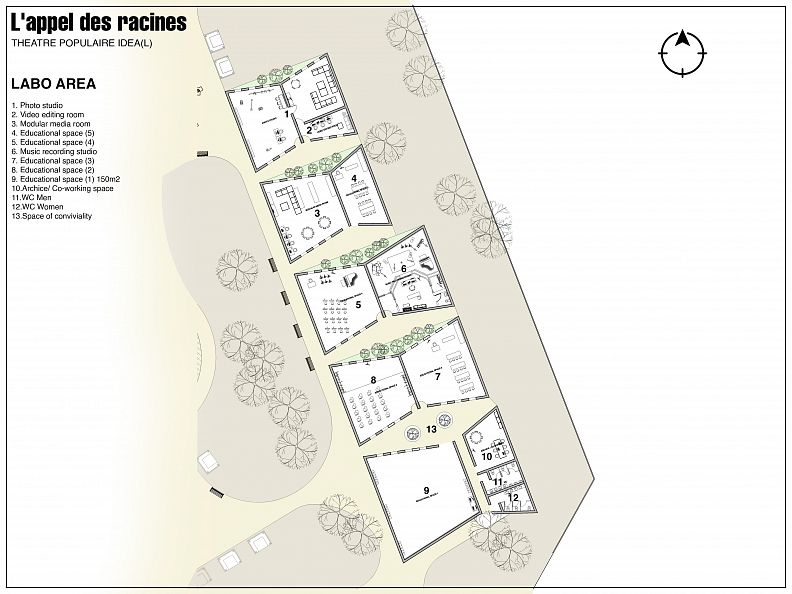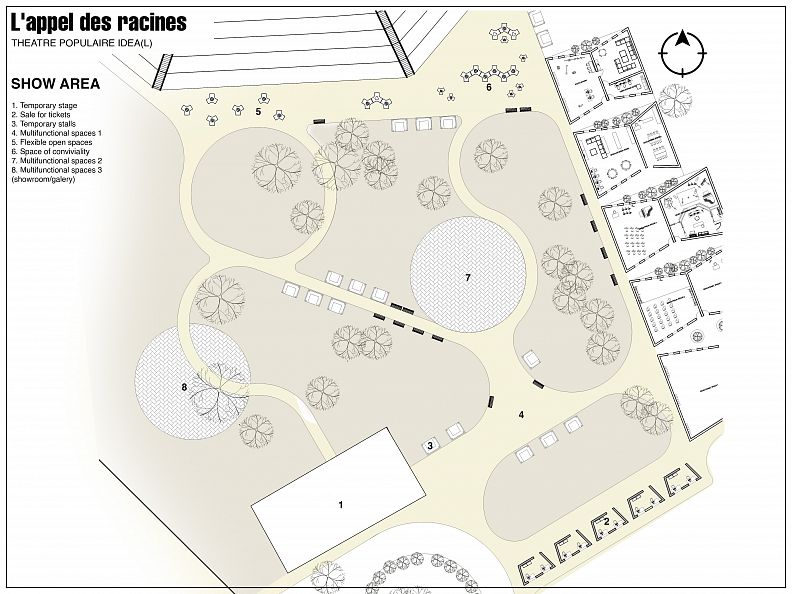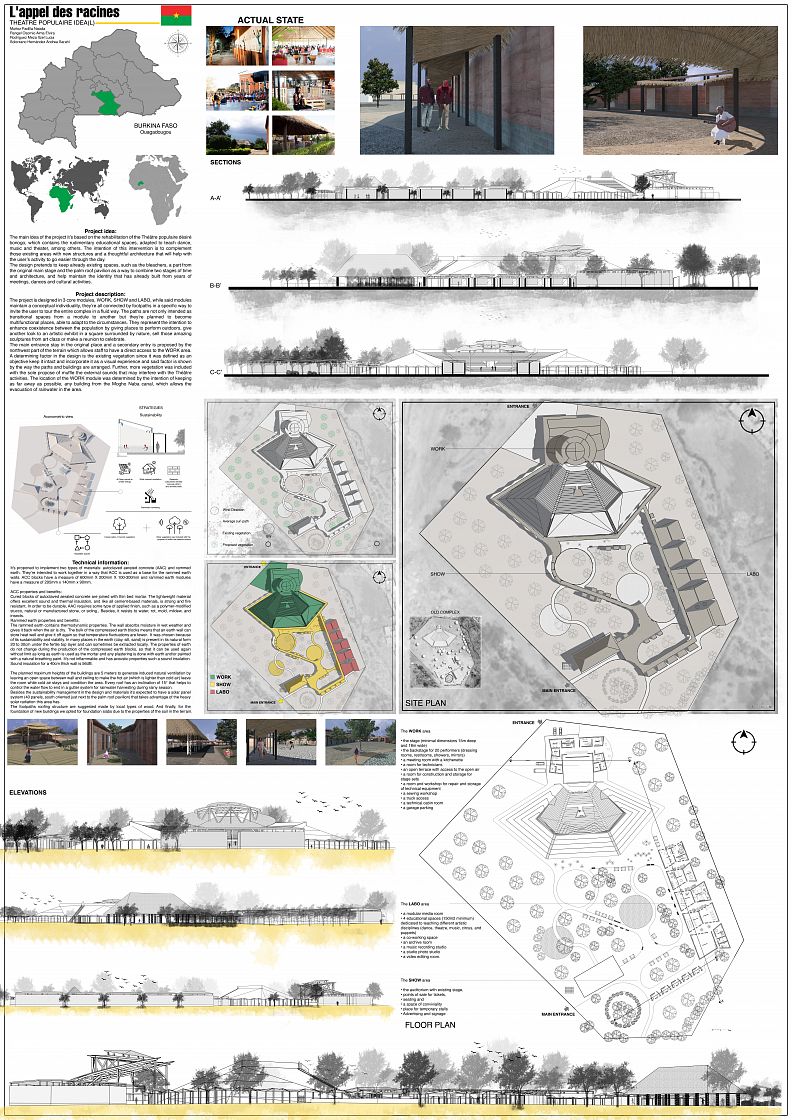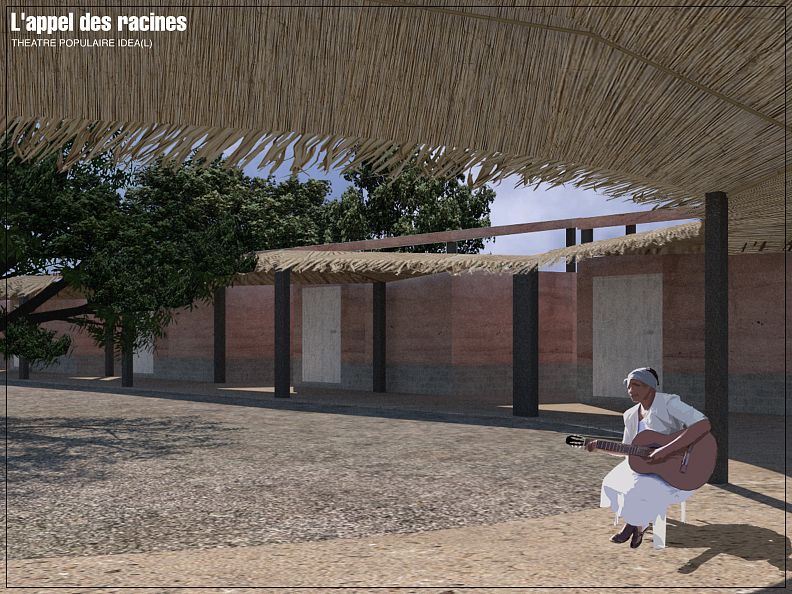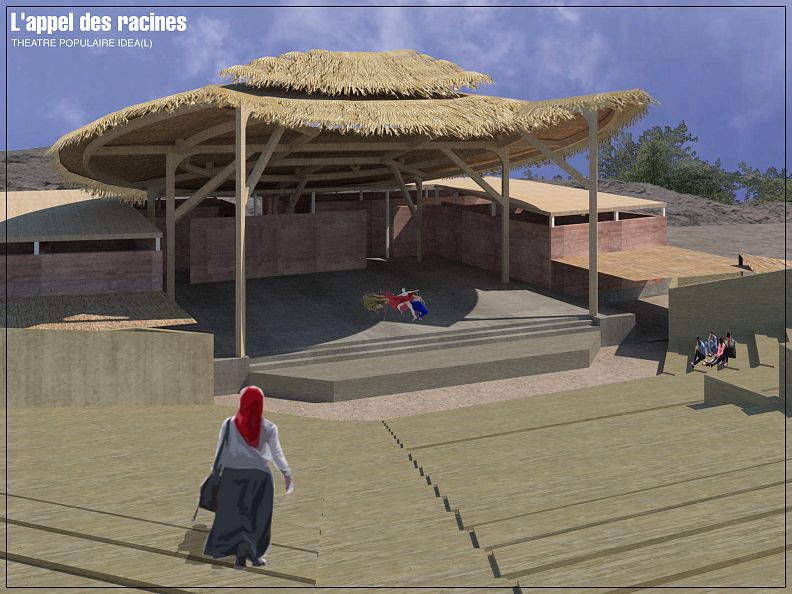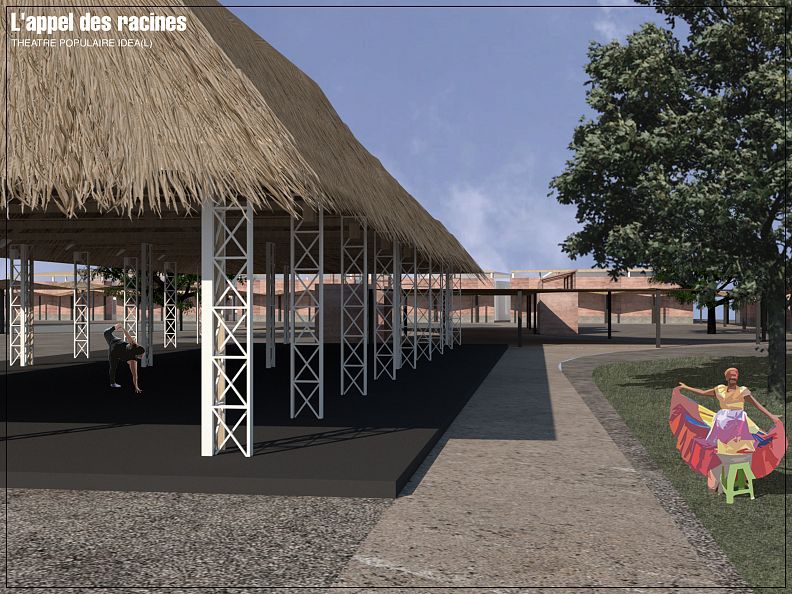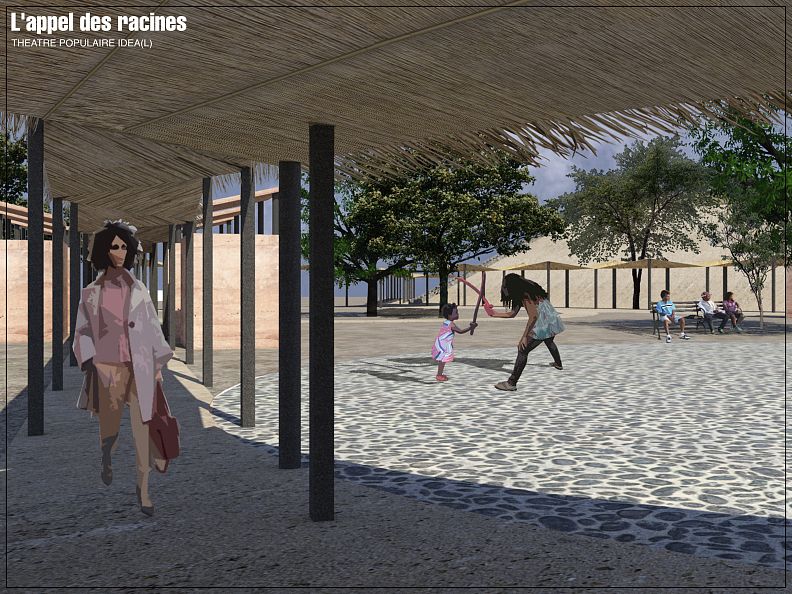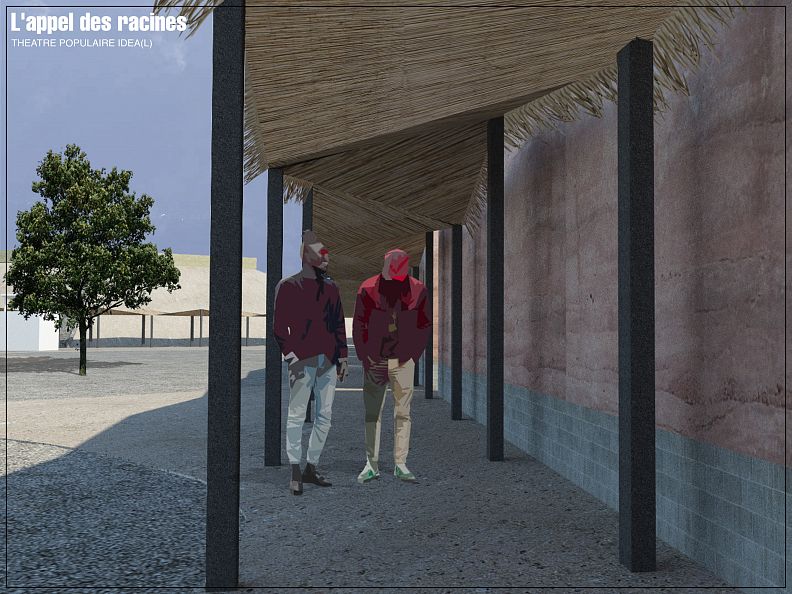THEATRE POPULAIRE IDEA(L) "L'appel des racines”

Project idea
The main idea of the project it’s based on the rehabilitation of the Théâtre Populaire Désiré Bonogo, which contains the rudimentary educational spaces, adapted to teach dance, music and theater, among others. The intention of this intervention is to complement those existing areas with new structures and a thoughtful architecture that will help with the user’s activity to go easier through the day.
The design pretends to keep already existing spaces, such as the bleachers, a part from the original main stage and the palm roof pavilion as a way to combine two stages of time and architecture, and help maintain the identity that has already built from years of meetings, dances and cultural activities.
Project description
The project is designed in 3 core modules, WORK, SHOW and LABO, while said modules maintain a conceptual individuality, they’re all connected by footpaths in a specific way to invite the user to tour the entire complex in a fluid way. The paths are not only intended as transitional spaces from a module to another but they’re planned to become multifunctional places, able to adapt to the circumstances. They represent the intention to enhance coexistence between the population by giving places to perform outdoors, give another look to an artistic exhibit in a square surrounded by nature, sell those amazing sculptures from art class or make a reunion to celebrate.
The main entrance stay in the original place and a secondary entry is proposed by the northwest part of the terrain which allows staff to have a direct access to the WORK area. A determining factor in the design is the existing vegetation since it was defined as an objective keep it intact and incorporate it as a visual experience and said factor is shown by the way the paths and buildings are arranged. Further, more vegetation was included with the sole propose of muffle the external sounds that may interfere with the Théâtre activities. The location of the WORK module was determined by the intention of keeping as far away as possible, any building from the Mogho Naba canal, which allows the evacuation of rainwater in the area.
Technical information
It’s proponed to implement two types of materials: autoclaved aerated concrete (AAC) and rammed earth. They’re intended to work together in a way that ACC is used as a base for the rammed earth walls. ACC blocks have a measure of 600mm X 200mm X 100-300mm and rammed earth modules have a measure of 295mm x 140mm x 90mm.
ACC properties and benefits:
Cured blocks of autoclaved aerated concrete are joined with thin bed mortar. The lightweight material offers excellent sound and thermal insulation, and like all cement-based materials, is strong and fire resistant. In order to be durable, AAC requires some type of applied finish, such as a polymer-modified stucco, natural or manufactured stone, or siding., Besides, it resists to water, rot, mold, mildew, and insects.
Rammed earth properties and benefits:
The rammed earth contains thermodynamic properties. The wall absorbs moisture in wet weather and gives it back when the air is dry. The bulk of the compressed earth blocks means that an earth wall can store heat well and give it off again so that temperature fluctuations are fewer. It was chosen because of its sustainability and viability. In many places in the earth (clay, silt, sand) is present in its natural form 20 to 30cm under the fertile top layer and can sometimes be extracted locally. The properties of earth do not change during the production of the compressed earth blocks, so that it can be used again without limit as long as earth is used as the mortar and any plastering is done with earth and/or painted with a natural breathing paint. It’s not inflammable and has acoustic properties such a sound insulation. Sound insulation for a 40cm thick wall is 56dB.
The planned maximum heights of the buildings are 5 meters to generate induced natural ventilation by leaving an open space between wall and ceiling to make the hot air (which is lighter than cold air) leave the room while cold air stays and condition the area. Every roof has an inclination of 15° that helps to control the water flow to end in a gutter system for rainwater harvesting during rainy season.
Besides the sustainability management in the design and materials it’s expected to have a solar panel system (40 panels, south oriented just next to the palm roof pavilion) that takes advantage of the heavy solar radiation this area has.
The footpaths roofing structure are suggested made by local types of wood. And finally, for the foundation of new buildings we opted for foundation slabs due to the properties of the soil in the terrain.
Co-authors
Muñoz Padilla Natalia
Rangel Osornio Alma Elvira
Rodríguez Meza Itzel Lucia
Solorzano Hernández Andrea Sarahí
